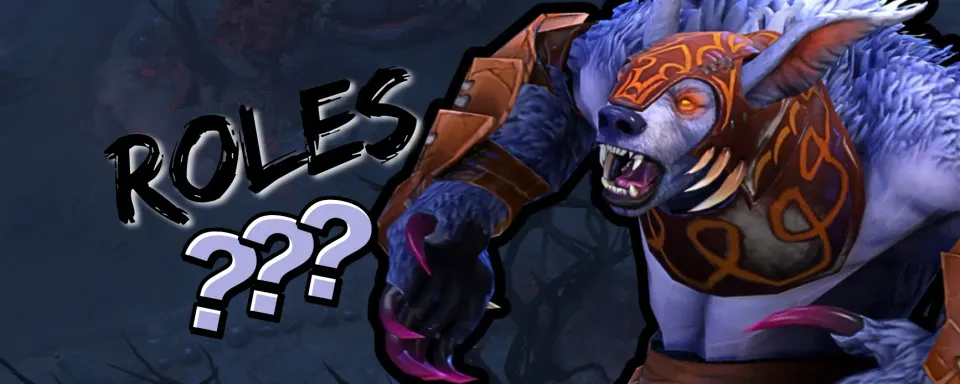
Roles and positions in Dota 2 is relatively simple, especially if you are familiar with strategy games and the MOBA (multiplayer online battle arena) genre. Simply put, the game pits 5v5 players, and in a team, there are roles and positions that players need to adhere to. Each role has a different responsibility, and players need to do their best to fulfill their roles to achieve the best team composition and allow for solid teamwork.
If you are a beginner, understanding the roles and positions is very crucial for a smooth experience. In this article, we have compiled everything you need to know including the different roles, positions, as well as hero tags that would help you understand the concept much better.
Definitions of Dota 2 Roles and Positions
In general, Dota 2 roles define a hero's responsibilities and lane placement. The terms “roles” and “positions” are often used interchangeably, particularly in pubs. This is why you may have heard of terms like Dota 2 roles 1-5, which refer to the same positions (1-5).
Although the two words are almost synonymous, there are key differences. In this guide, we’ll break down both Dota 2 roles and positions, as well as the various tags associated with them, to help you better understand these terms.
Dota 2 Roles Explained
Dota 2 hero roles are an official structure within the game, and players are required to select a specific role before entering a match, specifically in Ranked Role Queue mode. Once you enter the game, you must adhere to the selected role, or it will be a reportable offense.

Here are all Dota 2 roles explained:
- Safe Lane: Heroes in the Safe Lane go to the Radiant bottom lane or Dire top lane. This lane features a longer path compared to the other sidelanes and is closer to the outer jungle and large neutral camps, providing easier access to resources. The Safe Lane’s creeps also spawn closer to the tower, making it a "safer" area for laning.
- Mid Lane: Mid Lane heroes go to the central pathway, which is closest to the base and the two Power Rune locations near the river. This lane is a solo experience, meaning the hero gains a significant share of the gold and XP.
- Off Lane: Off Lane heroes go to the Radiant top lane or Dire bottom lane. This lane has a shorter path and is close to the "triangle" jungle and Wisdom Rune location. The Off Lane creeps naturally push further from the tower and closer to enemy territory, making it a more challenging lane.
- Support: Support heroes typically accompany Off Lane heroes, helping them in the early stages. Supports gain more XP as they are closer to the Wisdom Rune.
- Hard Support: Hard Support heroes pair with Safe Lane heroes, assisting while focusing on map control, like pulling creeps and blocking camps.

Dota 2 Positions Explained
Dota 2 positions are almost synonymous with Dota 2 roles but there are differences here and there. While roles explained more about the Dota 2 lane positions from top, mid, to bottom - Dota 2 positions will break down their unique responsibilities.
There are 1-5 Dota 2 position numbers, explained below:

- Position 1 - Carry: The primary damage dealer in the late game. Carries must prioritize farming and acquiring gold in the early game to become strong and contribute effectively during the later stages.
- Position 2 - Midlane: Responsible for maintaining the game’s momentum throughout. Midlaners need to actively participate in teamfights and frequently rotate to the sidelanes to apply pressure and secure map control.
- Position 3 - Offlane: Focused on pressuring the enemy carry, pushing waves, and securing objectives. Offlaners are typically tanky and play a key role in initiating teamfights, often providing crowd control and disruption.
- Position 4 - Support: A versatile hero who rotates to assist other lanes. This position typically involves heroes who can enter and exit teamfights, requiring minimal items while possessing abilities that disable or stun enemies.
- Position 5 - Support: Primarily responsible for babysitting the carry hero in the early game and providing map control through warding and dewarding. These supports don’t typically require items to contribute in teamfights and usually build defensive items to protect teammates.
How to Sort Out Roles for Heroes?
Dota 2 categorizes heroes using various tags which highlight their strengths and functionalities. A single hero can have multiple tags, depending on their ability kit, natural attributes, and even Talents. These tags are massive indicators as to what the hero is suitable for.

Here are all Dota 2 tags explained:
- Melee - Melee heroes have a short attack-range and need to fight up close to deal basic damage.
- Ranged - Ranged heroes have a long attack-range and can deal basic damage from a distance.
- Disabler - Has a guaranteed disabler such as stuns, silences, and leashes in their abilities.
- Durable - Naturally tanky and has the ability to last longer in teamfights.
- Escape - Has the ability to escape and avoid deadly altercations.
- Initiator - Has the right abilities to successfully start a teamfight.
- Nuker - Has the ability to quickly burst and eliminate enemies with their abilities.
- Pusher - Can quickly damage and take down objectives such as towers and barracks.
In a game, there is no cookie-cutter template for the roles required or how many of each should be on a team, as this depends on the gameplay and strategy the team intends to execute. However, a balanced mix of Melee and Ranged heroes is generally needed. It’s also important to have a Durable (tank) and a Disabler (such as stunners or silencers) to ensure better synergy during teamfights.
Understanding these role tags is crucial for grasping the concept of roles and positions in Dota 2. For example, by knowing that Earth Spirit has the tags for Escape, Initiator, and Durable, you can confidently conclude that this hero is a strong pick for Position 4 or 3.
Dota 2 Heroes for Each Position
What better way to learn than more examples, right? If you’re struggling to still pick out heroes for certain roles, we have listed down a couple of hero examples for you below!

- Dota 2 Position 1 Heroes: Ursa, Drow Ranger, Juggernaut, Phantom Assassin, Morphling
- Dota 2 Position 2 Heroes: Puck, Ember Spirit, Queen of Pain, Storm Spirit, Dragon Knight
- Dota 2 Position 3 Heroes: Axe, Centaur Warrunner, Tidehunter, Enigma, Bristleback
- Dota 2 Position 4 Heroes: Earth Spirit, Earthshaker, Tusk, Rubick, Techies
- Dota 2 Position 5 Heroes: Ancient Apparition, Disruptor, Lich, Lion, Bane
That wraps up our detailed guide for roles and positions in Dota 2!
Comments
Upcoming Top Matches
Latest top articles







No comments yet! Be the first one to react